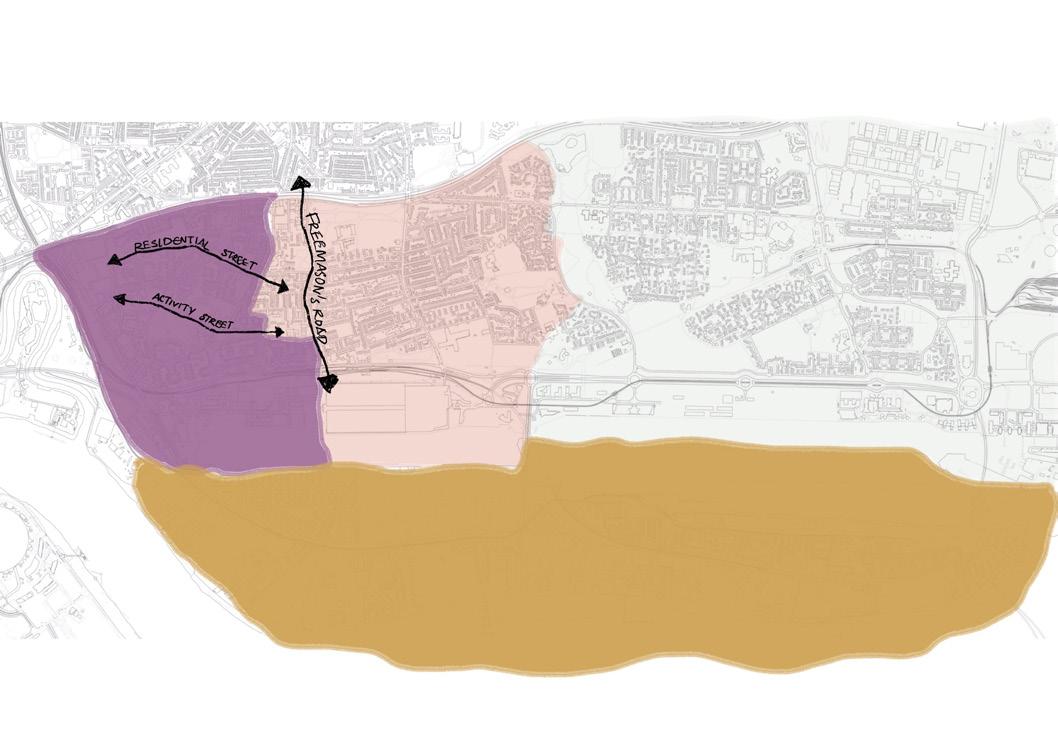Word Count: 573 words
Canning Town & Royal Docks - A ‘non-place’ for the residents of Custom House
The regeneration program of the Borough of Newham is an ongoing one with serval projects nearing completion like the regeneration of the Royal Docks and Canning Town. Development projects relating to upgrading existing and new transport networks along with the promise of connectivity are aplenty in the Custom House Regeneration proposal. The DLR and the upcoming Elizabeth line are just a few examples of this. They come with the potential of quick connectivity for Newham residents to the central, farer parts of London. This piece of urban analysis aims to critically anatomize the effect of this on the relationship between the residents of Custom House and the neighboring areas of Canning Town and the Royal Docks.
In this background of far-reaching connectivity, it has been observed through analysis of interviews conducted with residents, that there is an inherent disconnect between the neighboring districts of Canning Town, the Royal Docks, and the residents of Custom House. Though these areas are situated in proximity and in walkable distances from Custom House and are undergoing recent massive regeneration themselves, they seem to be frequented the least by the locals of Custom House. Most of the residents preferred to travel by the DLR, bus, car to Beckton (to the supermarket ASDA situated there in particular) to carry out their grocery shopping in the weekends. Stratford (the Westfield Mall in particular) was another popular option for shopping as well as a place for hanging out among the youth. Some others just preferred to take the DLR and then change to the Jubilee line at Canning town to go into Central London for leisure. Although only eleven interviews were conducted among the residents, the theme of dissociation with Canning Town and Royal Docks was a common
thread. “Increased mobility creates possibilities for some, while for others it involves a restriction on their everyday activities.” (Lassen & Jensen, 2004 as cited in Olesen & Lassen, 2012). In this case, Canning Town, as an area, with increased mobility via DLR and Jubilee line, has by itself become a transient place for the residents of Custom House as opposed to a place of longer stay or visit. The “nonplace” (see Adey, 2006; Arefi, 1999) characteristics of Canning Town and the Royal Docks is highlighted through the mobility of the residents to the neighborhoods beyond it. It also brings into focus Custom House’s lack of satisfying its residents’ everyday needs. This has been conveyed through the stop-motion video.
The council, as a part of the overall regeneration proposal, has proposed the revitalization of two streets connecting Canning Town and Custom House – one majorly residential and the other commercial in nature – along with the revamping of the Freemasons street, to facilitate pedestrian mobility between Canning Town and Custom House (Newham Council, 2006; Newham Council, 2007). The recently opened Morrisons store (October 2019) at Canning Town has started to cause some footfall in the area by the residents of Custom House. There are also plans to revive the Rathbone street into a market area. The residents’ associated memory for everyday needs shopping has already been established in the various places mentioned in the previous paragraph. There also exists a common perception of the difficulty to walk to Canning Town due to the current cul-de sacs (Newham Council, 2007). This coupled along with the transitory nature of Canning Town, makes the success of these interventions proposed by the council dependent on the due course of time.
Video Disclaimer:
The administrative boundary of the Newham Borough goes well beyond the region depicted in the video. Only a part of the region was chosen for the analysis.
The administrative boundary of the Canning Town, Beckton and the Royal Docks goes well beyond the region depicted in the video.
Bibliography
Adey, P. (2006). If Mobility is Everything Then it is Nothing: Towards a Relational Politics of (Im)mobilities. Mobilities, 1(1), pp.75-94.
Arefi, M. (1999) Non-place and placelessness as narratives of loss: Rethinking the notion of place, Journal of Urban Design, 4:2, 179-193, DOI:10.1080/13574809908724445
Lassen, C. & Jensen, O. B. (2004) Den globale bus om arbejdsrejsersbetydning i hverdagslivet, in M. H. Jacobsen & J. C. Tonboe (Eds) Arbejdssamfundet den beslaglagte tid og den splittede identitet, pp. 241–279 (København: Hans Reitzels forlag).
Massumi, B. (2002) Parables for the Virtual: Movement, Affect, Sensation (Durham, NC: Duke University Press).
Newham Council (2006). Canning Town and Custom House Supplementary Planning Document. London. Available at: https://www.newham.gov.uk/Documents/Environment%20 and%20planning/CanningTownCustomHouseAdoptedSPD2008%5B1%5D.pdf
Newham Council (2007). Regeneration Project Canning Town and Custom House. London. Available at: https:// www.newham.gov.uk/Documents/Environment%20and%20 planning/CanningTownCustomHouseRegenMasterplanConsultation.pdf
Olesen, M. and Lassen, C. (2012). Restricted Mobilities: Access to, and Activities in, Public and Private Spaces. International Planning Studies, 17(3), pp.215-232.
Tschumi, B. (1994) Event-Cities: Praxis (Cambridge, MA: MIT Press).
Tschumi, B. (2000) Event-Cities 2 (Cambridge, MA: MIT Press).








